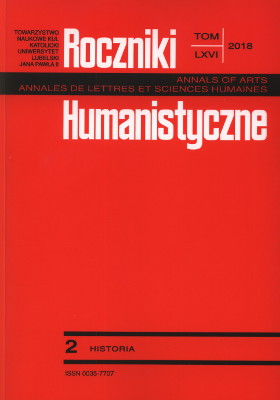Organy w kościołach archidiakonatu pomorskiego w XVI-XVIII wieku
Organs in the Churches of the Pomeranian Archideaconry between the 16th and the 18th Century
Author(s): Tomasz NowickiSubject(s): History, Fine Arts / Performing Arts, Music, Modern Age, 16th Century, 17th Century
Published by: Towarzystwo Naukowe KUL & Katolicki Uniwersytet Lubelski Jana Pawła II
Keywords: Royal Prussia; Diocese of Włocławek; Pomeranian Archdeaconry; organs; parish churches; filial churches; 16th-18th century; modern times
Summary/Abstract: Church music in the Catholic Church has been enriched by organ play for centuries. However, the spread of this instrument has been stretched over time. The first organ in Poland appeared in the 13th century, but in small towns and villages organs started to appear more often from the 16th century. This is confirmed by the example of the Pomeranian Archdeaconry. In the second half of the 16th century 12 temples had organs, but one hundred years later already 54, and in the 1880s all parish churches of most filial churches were equipped with an organ.Organs spread faster in urban churches. At the end of the 16th century, they were recorded in half of the towns of the archdeaconry, and only in about 5% of the village temples. A hundred years later, organs were in over 80% of town churches and already in about 36% of village temples. After another hundred years, over 92% of urban churches and almost 86% of rural churches had this type of instrument.The reception of the organ was to a certain extent dependent on the patronage of the temple. It was growing fastest in temples with church patronage and slower in temples with royal, and gentry patronage.Another aspect of research into organs is to determine their size. Visits usually give only the subjective feelings of the inspector or information about the number of organ voices, which may indirectly indicate the size of the instrument. Most often, the organs belonged to a group of small, several-voiced instruments. This type dominated (80-90%) in the 18th century. There are also large instruments with a larger number of voices (in Świecie – 21, in Byszewo – 17). Regarding the state of preservation of organs, most of them were considered in good condition, alt-hough the percentage fluctuated in various visits from 89% in the years 1686-1687 to approx. 55% in the visits in the 1860s and 1880s.
Journal: Roczniki Humanistyczne
- Issue Year: 66/2018
- Issue No: 2
- Page Range: 59-84
- Page Count: 26
- Language: Polish

